Julian Charrière. First Light
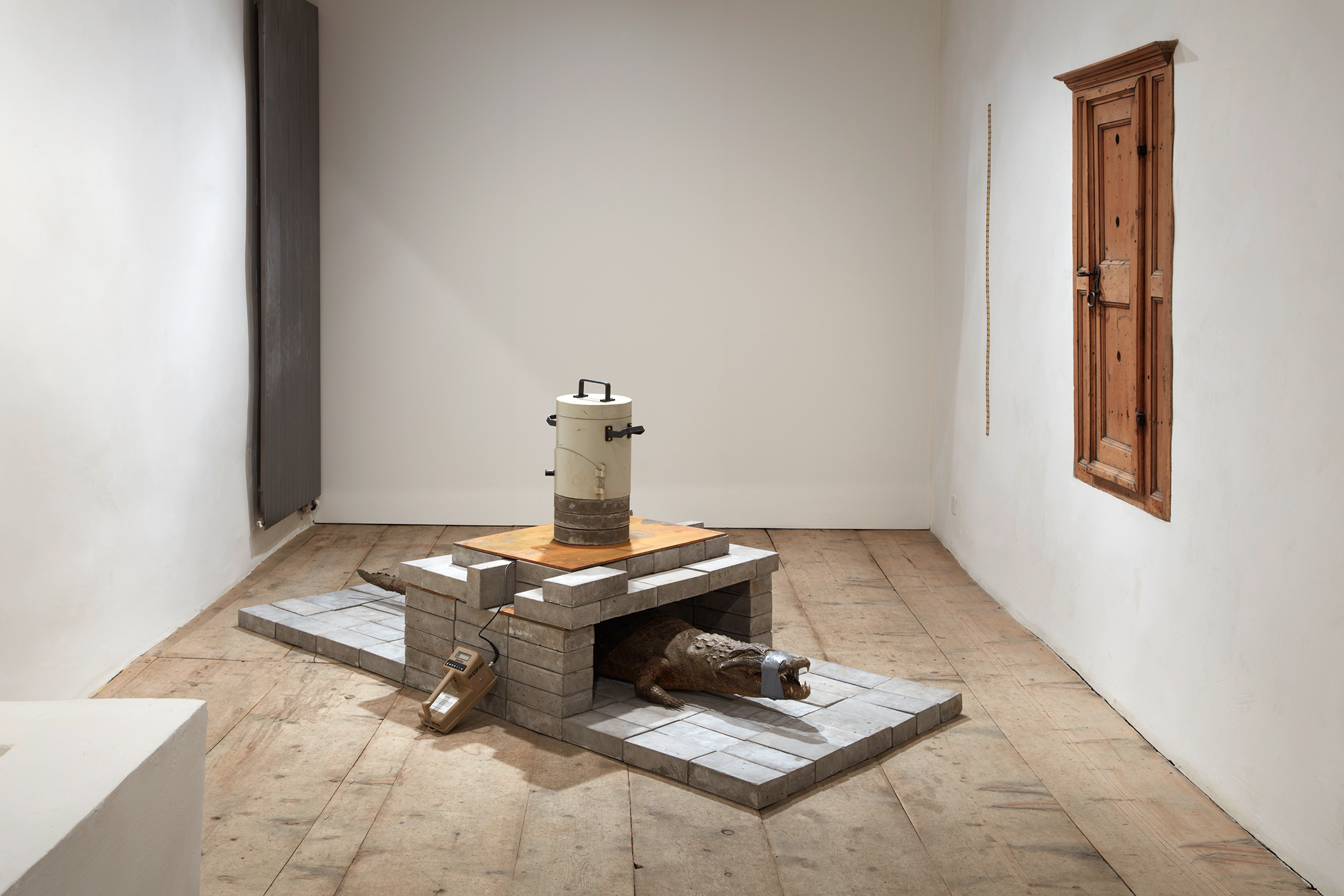
Savannah Shed, 2016
concrete, detector shield, scintillation pectometer, crocodile, tape
installation view at Galerie Tschudi, Zuoz, 2016/2017
–
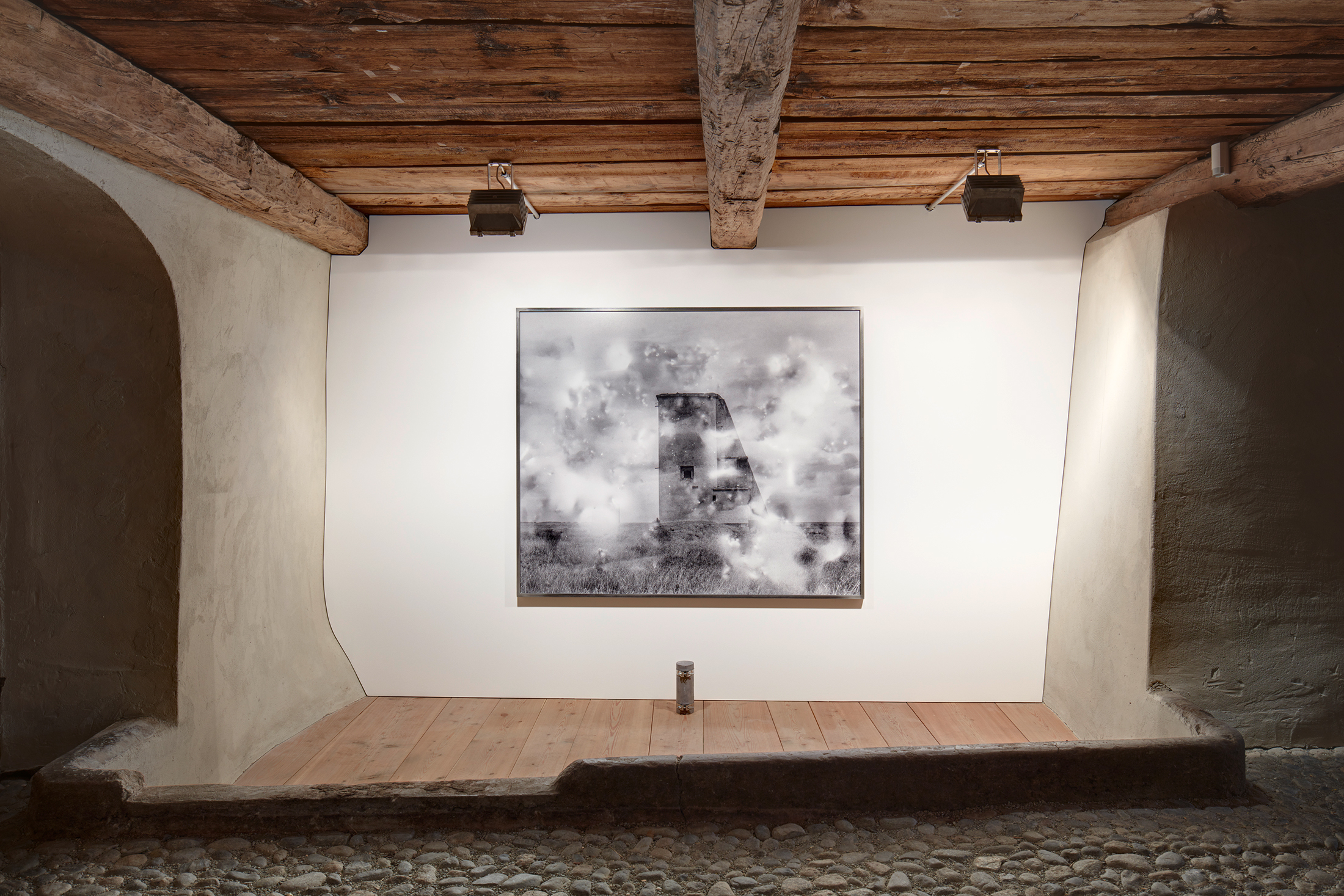
Polygon XVIII, 2014
black and white double exposure medium format film on baryta paper, steel frame, lead, glass, thermonuclear strata, negative, 150 x 180 cm
unique (the owner of the work get the negatif and some stones from the site in a lead tube)
–
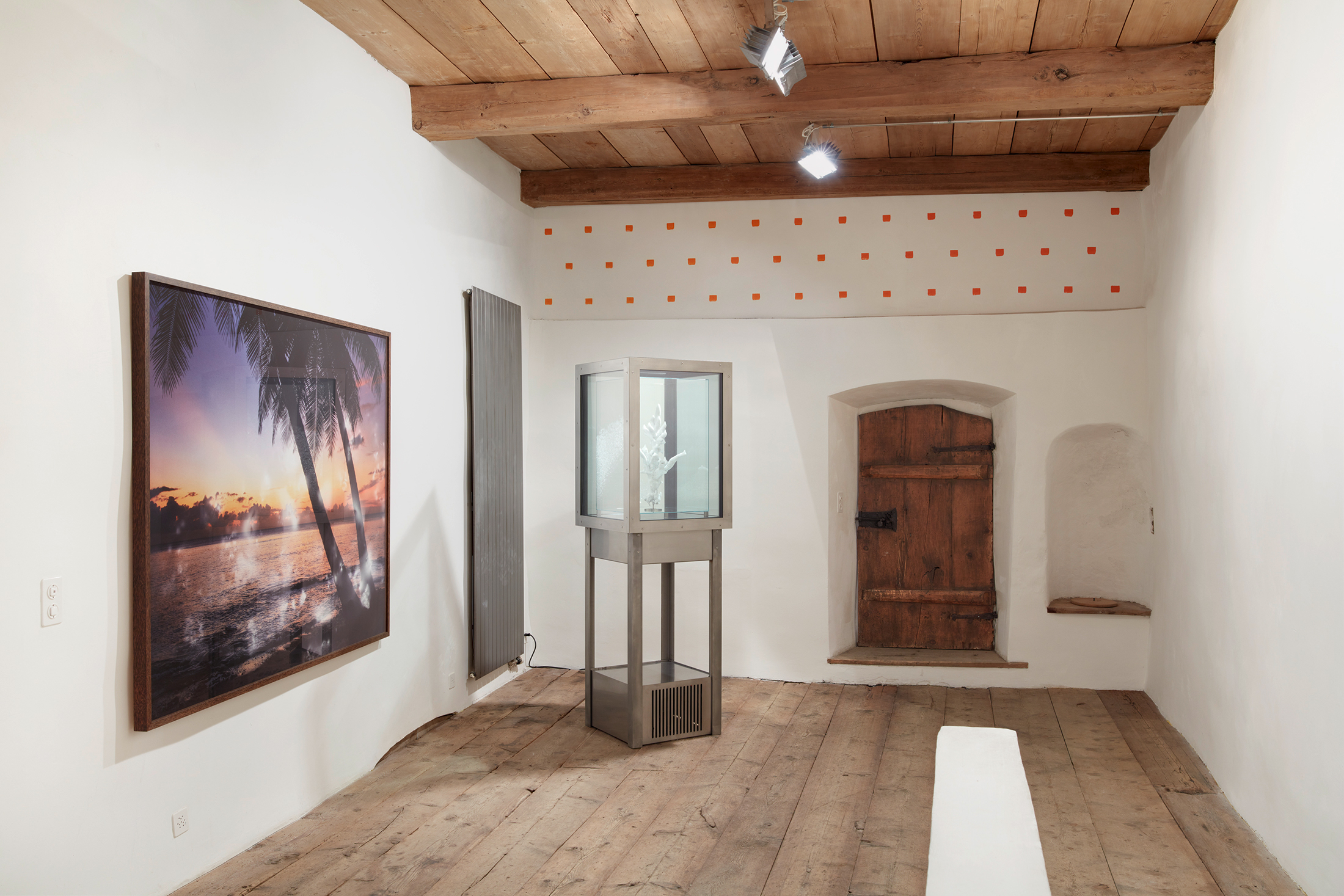
JULIAN CHARRIÈRE, First Light
installation view at Galerie Tschudi, Zuoz, 2016/2017
–

Tropisme, 2015
frozen plant, refrigerated showcase, 208 x 66 x 66 cm
–
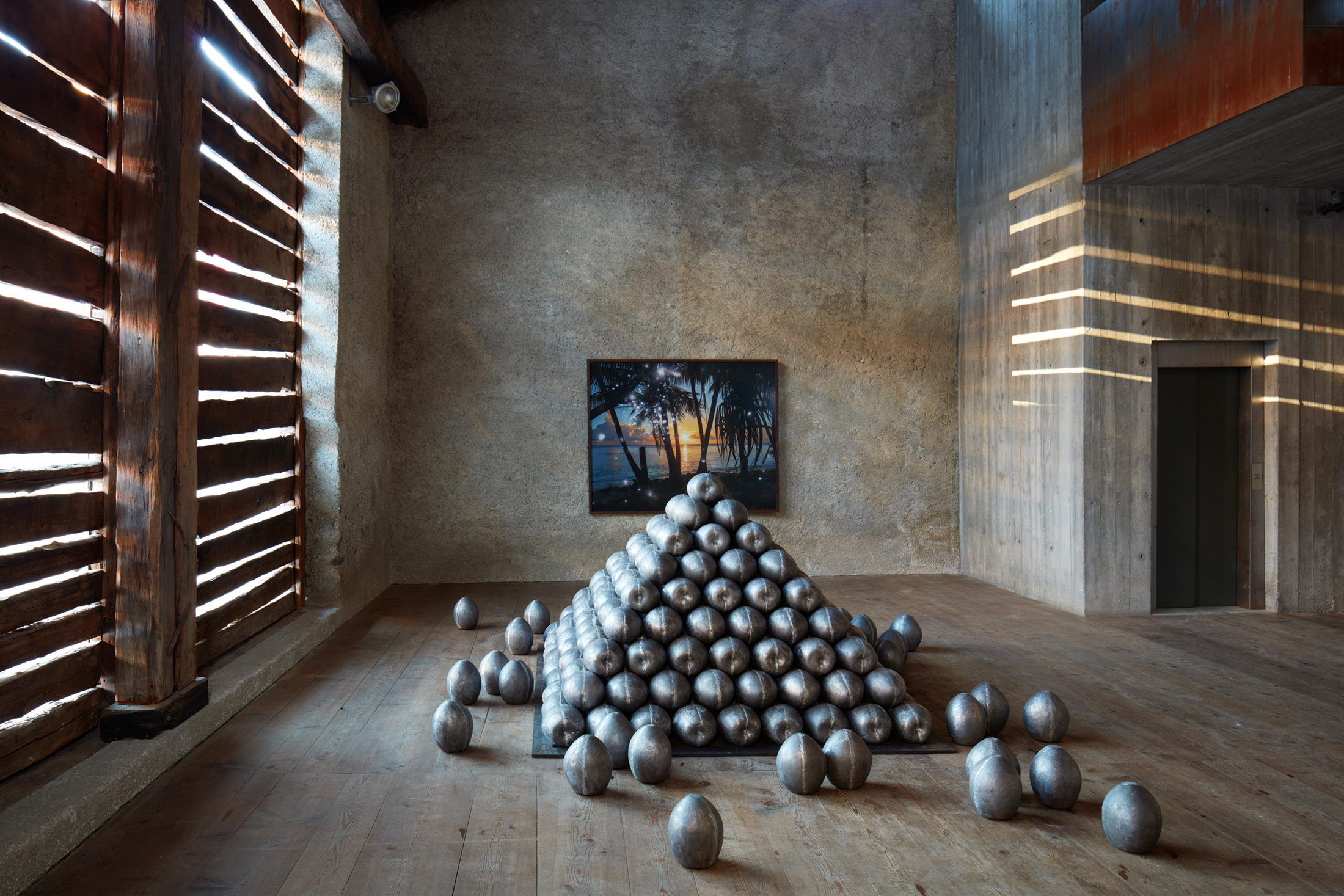
Pacific Fiction – Study for Monument, 2016
coconut Sarcophagi, 128 cm high in a steel frame of 227 x 203 cm, overall size: 330 x 440 cm
unique (Model for Monument for Marshall Island)
–
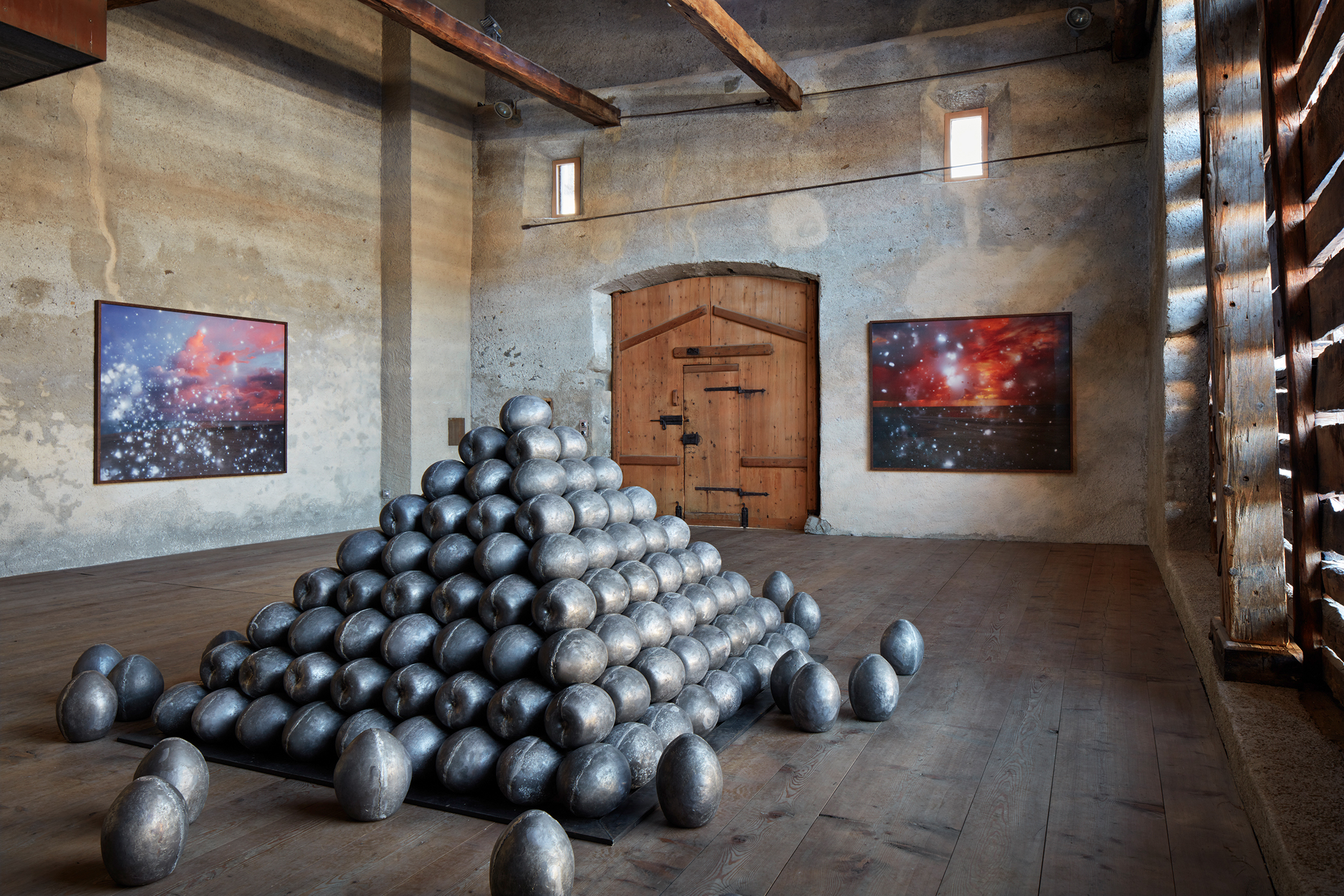
JULIAN CHARRIÈRE, First Light
installation view at Galerie Tschudi, Zuoz, 2016/2017
–
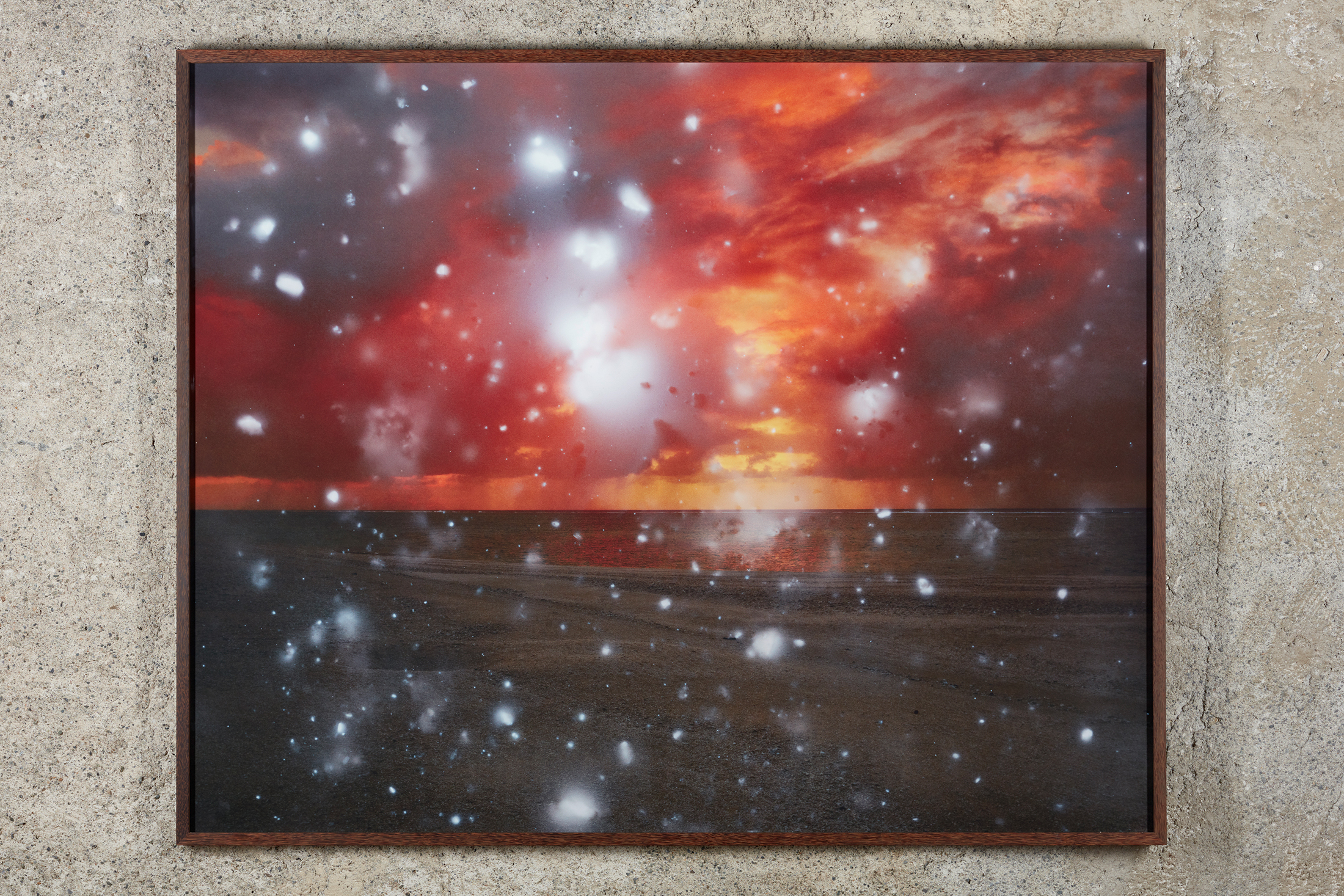
Bravo – First Light, 2016
archival pigment print on Hahnemühle Photo Rag, mounted on aluminium Dibond, red Palmira veneered frame, Mirogard anti-reflective glass, 153.8 x 191.3 cm (framed), unique
–

Able – First Light, 2016
archival pigment print on Hahnemühle Photo Rag, mounted on aluminium Dibond, red Palmira veneered frame, Mirogard anti-reflective glass, 153.8 x 191.3 cm (framed)
–
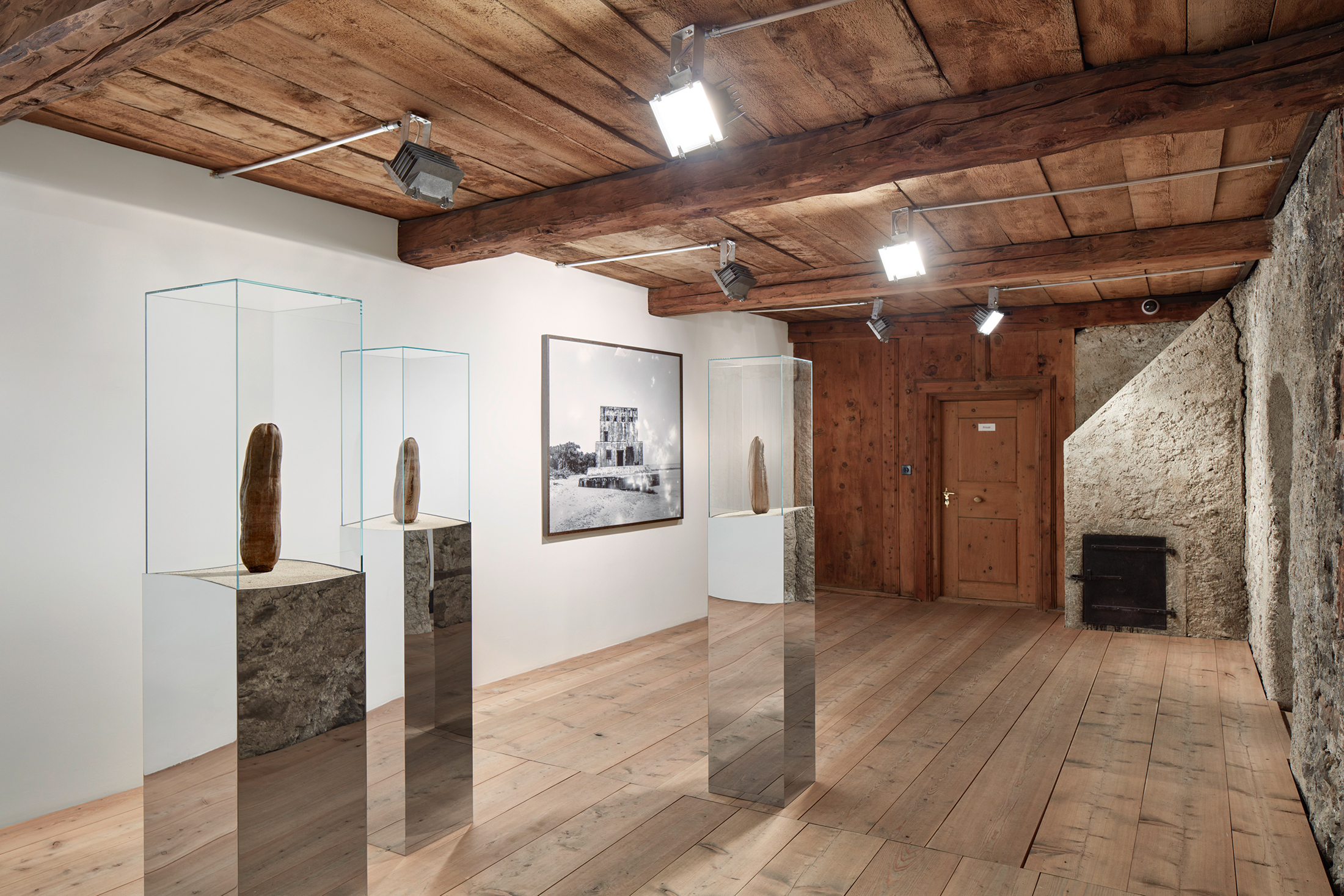
JULIAN CHARRIÈRE, First Light
installation view at Galerie Tschudi, Zuoz, 2016/2017
–
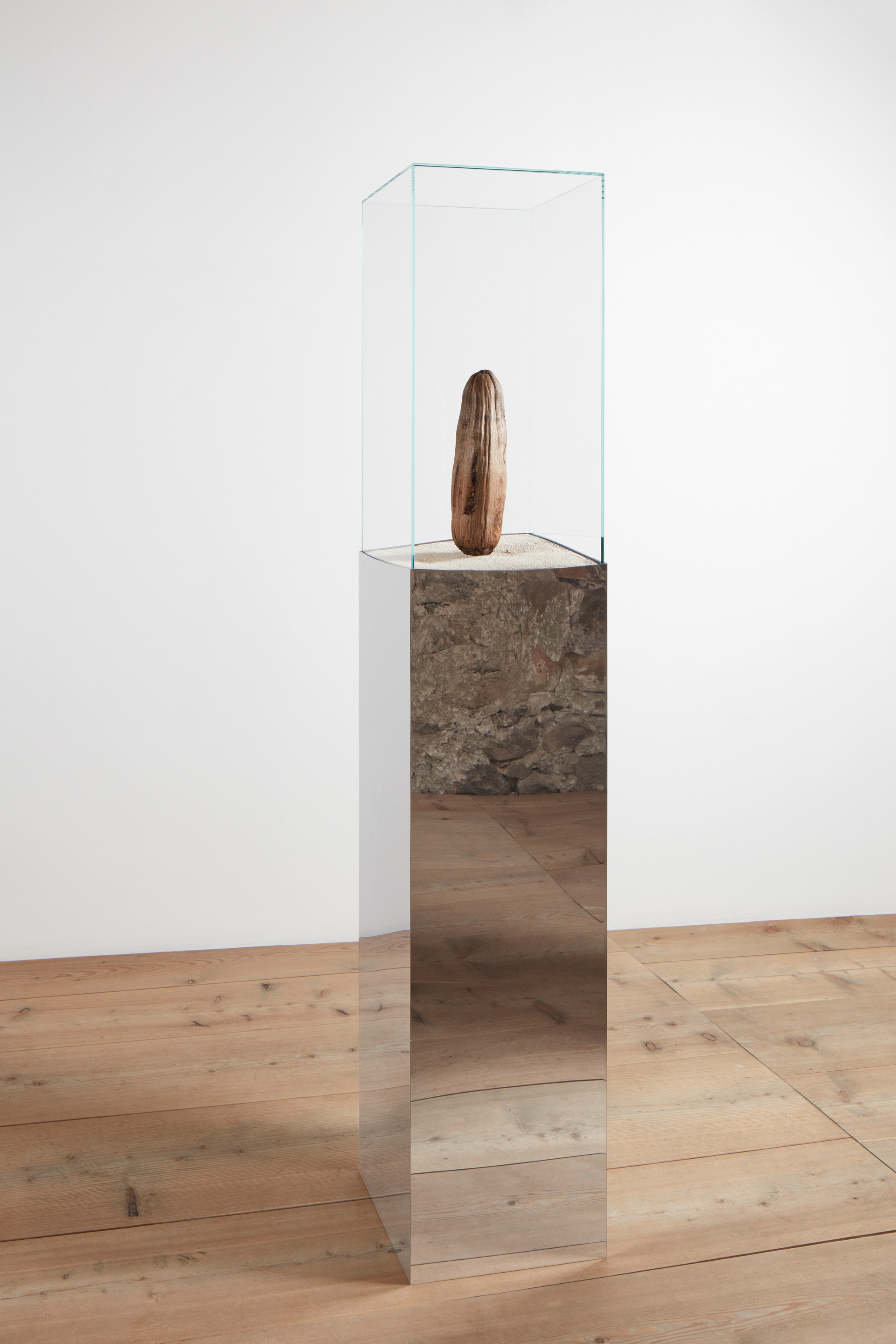
Lost at Sea – Pikini-Fragment, 2016
high pollished stainless steel, coral sand, mutated bikinian coconut, glass, 175 x 32 x 32 cm
–
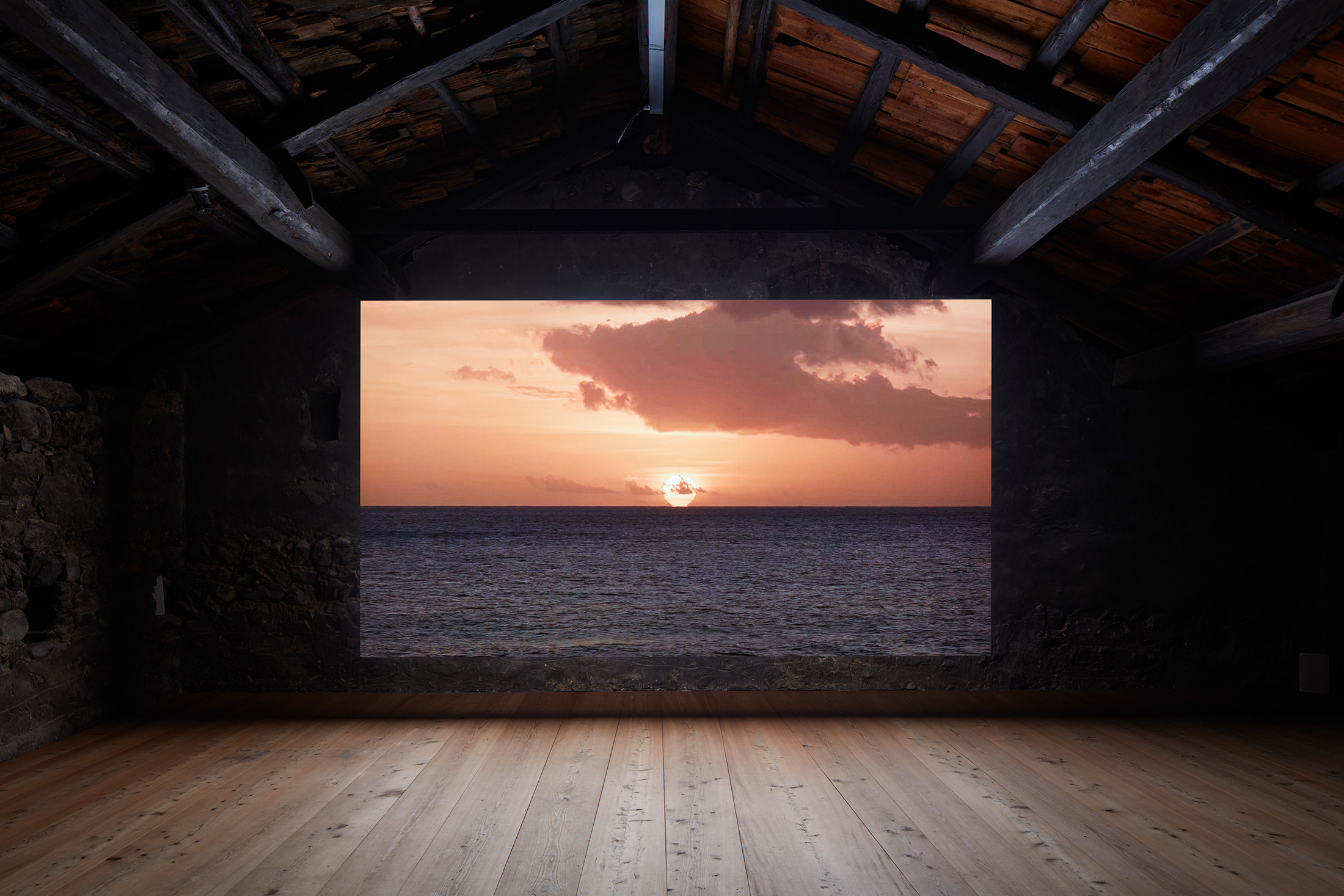
Iroojrilik, 2016
video, 24 min, Sound Edward Davenport
all images courtesy of the artist and Galerie Tschudi, Zuoz
–
Imagine the scenery: Switzerland, the fresh air, the mountains, the snow, the chalets. In this idyllic context, JULIAN CHARRIÈRE is currently presenting a new body of work that is the result from his expedition to radioactive and abandoned sites.
Entitled First Light, the presentation is featuring CHARRIÈRE‘s objects, videos and prints that are reflecting particularly upon the landscape and ecology of Bikini Atoll in the Marshall archipelago. A dramatic paradise where no less than 67 nuclear tests have been carried out from 1946 to 1958, including the explosion of the first H-bomb (1952).
During this period, bombs delivering a combined fission yield of 42.2 megatons were detonated. The force of one of these, ‘Castle Bravo’, was enough to vaporize two islands, and gouge a massive crater – measuring 2000 metres in diameter – out of the primordial reef. Another, codenamed ‘Baker’, threw a fleet of 70 captured and decommissioned WW2 battleships – some of them up to 250 metres long – up into the air. A few were ripped to shreds. Others, like the USS Saratoga and the HIJMS Nagato – storied flagships of the US and Japanese navies – eventually sank to the bottom, where their rusting hulks remain today. During this period, obliterated geology would become radioctive particles, carried on the wind to then fall on communities in neighbouring atolls. Meanwhile, the people of Bikini, who had been ‘asked’ to temporarily leave their home to make way for a series of experiments ventured ‘for the good of mankind and to end all wars’ began to learn the meaning of an exile and dispossession that continues until present. Today, the atoll’s islands bear architectural scars that stand as profane registers of this program and its unresolved consequences; a series of concrete bunkers, jutting out from the shore or hidden beneath jungle. ‘ (excerpt from the press release)
First Light by JULIAN CHARRIÈRE is on view at Galerie Tschudi, Zuoz until March 18, 2017.
–
comments are closed !